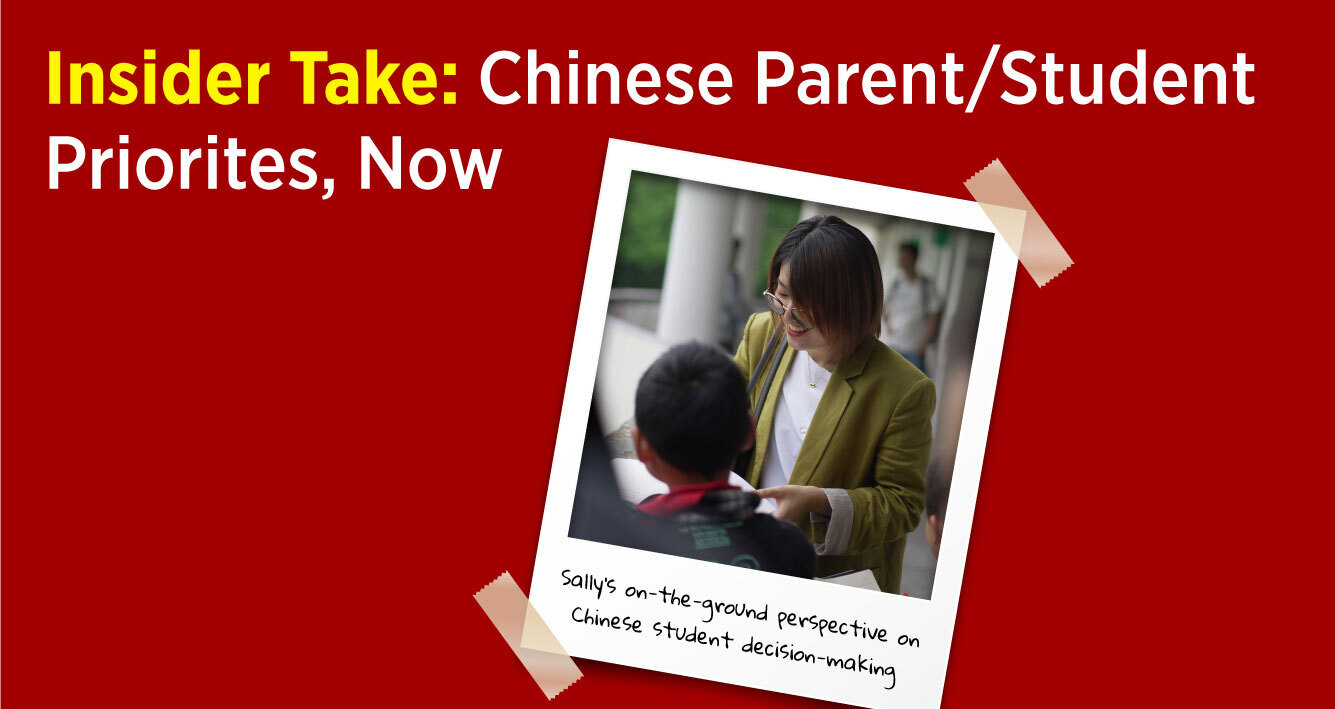Chinese student numbers are sobering. With the latest IIE data showing a 26.1% decline in total U.S. incoming students from China in 2021/22, you and your peers are more than aware. It’s the kind of stat that leaves a mark and prompts questions.
Has your leadership posed this to you: “Should we be in China at this point?”
If you regularly follow our blog then you know times like these call for a hard look at market diversification. It is a winning strategy. Your admissions team as well as the campus community stand to gain so much by building a diverse student population. Beyond the diverse, cross-cultural learning that is part of your mission, diversifying where you draw students from offers more financial confidence and reslience to your institution.
Markets fluctuate. Diverse revenue streams stabilize.
Today we look at why giving up on Chinese students is not in your best interest, nor is it in theirs. Diversify your market reach, yes. But tamping down your work with prospective Chinese families will limit your opportunities and future success. Maybe especially now.
This is a blog post we think you'll want to share with other leaders on campus. A question: have you looked at the current youth unemployment rate in China?
Quick aside: Ben and Iliana will be at the NACAC conference presenting alongside our colleagues from AIRC and Middle Tennessee State University on September 22 in Baltimore. Can we schedule a time to chat? Coffee's on us! We still have room on our schedules.
For over two decades China has solidly been the top sender of students to the U.S. In 2021 alone this singular cohort added $10.5 billion to the U.S. economy per the U.S. Department of Commerce. And that’s on a down year. Sure, India is expected to surpass China in the not-too-distant future (more on that in an upcoming post), but China will remain a strong market.
Let’s be clear: giving up on Chinese students during this downturn would be a mistake.
Here’s the thing, while the declining enrollment of Chinese students in America is so much about the pandemic and politics, it’s the day-to-day reality of this cohort that should get your attention. The volume of students and their interest in a foreign education will continue to produce significant enrollment opportunities. Important that your strategy adapts to the times employing the right programs and messaging.
Why is there continuing demand for a foreign education among Chinese students and families? Consider these current truths:
- High Youth Unemployment Rates: Unemployment in China within the young urban population is stagnating at an ugly 20%. A number so stubborn and bleak that the government recently stopped reporting it altogether. What’s more, 70% of these unemployed are college graduates, according to a recent article in The Economist. Even more troubling, reliable Chinese economists outside the government suggest that the current youth unemployment rate may be more than double the government's previously published figure.
- The Government’s Get-Tough Response: Xi Jinping’s response to the current sour economy? He tells the young to “eat bitterness” and “seek self-inflicted hardships.” A bitter pill indeed for a generation that has grown up with aspirations of social mobility. After all, China has been more agreeable to private enterprise and other aspects of an open society in recent decades. Significant middle-class growth in China has powered the growth in international education and set a generation of expectations for opportunity. That time appears to be changing, a lot.
- Disillusioned and Disaffected: A pervasive sentiment among China’s youth is that, regardless of their efforts, achieving a better quality of life feels increasingly unattainable. Jobs are scarce. Cities are less and less affordable to live in. The once semi-open culture now feels less so. Even marriage is losing its appeal. This cohort is disillusioned and disaffected. The government has cracked down on social media posts that refer to "laying flat," (e.g. slowing down and basically giving up). The younger, unemployed/underemployed segment who are discouraged and laying flat become dependent on their parents (referred to as "bite old") as they feel they have very low or no revenue or career prospects.
Economic and political pressures over the next couple years look to be significant within China. Amid this undeniably challenging time for young Chinese citizens, they have eyes on the world through social media. They see opportunity out there.
Read on for our take on how to reassess and adapt your strategies to better serve this vital demographic in the near term. And we want you to be prepared to adapt as the pressures within China change as they are surely going to.
Read More












